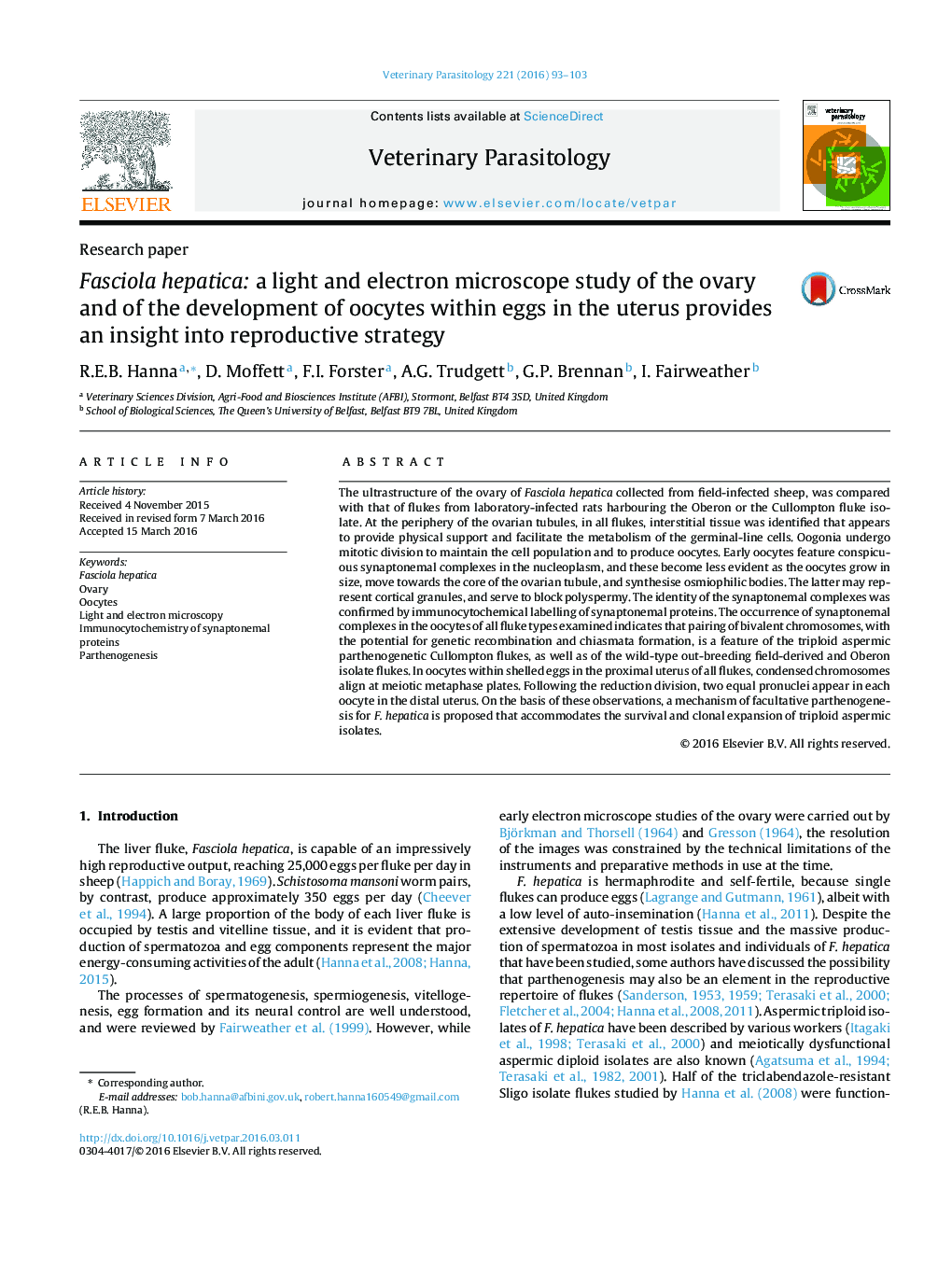| کد مقاله | کد نشریه | سال انتشار | مقاله انگلیسی | نسخه تمام متن |
|---|---|---|---|---|
| 5802192 | 1555655 | 2016 | 11 صفحه PDF | دانلود رایگان |

- Ultrastructure of ovary in out-breeding and triploid Fasciola hepatica compared.
- Synaptonemal complexes in oocytes supports bivalent pairing and recombination.
- Identity of synaptonemal complexes confirmed by immunocytochemistry.
- After meiosis with or without fertilisation two equal pronuclei appear in each egg.
- Facultative parthenogenesis accommodates survival of polyploid isolates.
The ultrastructure of the ovary of Fasciola hepatica collected from field-infected sheep, was compared with that of flukes from laboratory-infected rats harbouring the Oberon or the Cullompton fluke isolate. At the periphery of the ovarian tubules, in all flukes, interstitial tissue was identified that appears to provide physical support and facilitate the metabolism of the germinal-line cells. Oogonia undergo mitotic division to maintain the cell population and to produce oocytes. Early oocytes feature conspicuous synaptonemal complexes in the nucleoplasm, and these become less evident as the oocytes grow in size, move towards the core of the ovarian tubule, and synthesise osmiophilic bodies. The latter may represent cortical granules, and serve to block polyspermy. The identity of the synaptonemal complexes was confirmed by immunocytochemical labelling of synaptonemal proteins. The occurrence of synaptonemal complexes in the oocytes of all fluke types examined indicates that pairing of bivalent chromosomes, with the potential for genetic recombination and chiasmata formation, is a feature of the triploid aspermic parthenogenetic Cullompton flukes, as well as of the wild-type out-breeding field-derived and Oberon isolate flukes. In oocytes within shelled eggs in the proximal uterus of all flukes, condensed chromosomes align at meiotic metaphase plates. Following the reduction division, two equal pronuclei appear in each oocyte in the distal uterus. On the basis of these observations, a mechanism of facultative parthenogenesis for F. hepatica is proposed that accommodates the survival and clonal expansion of triploid aspermic isolates.
Journal: Veterinary Parasitology - Volume 221, 15 May 2016, Pages 93-103